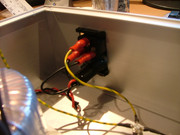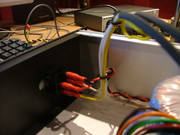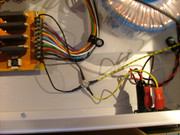[silent:arts]
Well-known member
;D ;D
however, I can't answer most of the questions.
most features / options / questions developed in different threads.
I understand it is hard to follow, I have the same problems with other projects / PCBs I bought in the past and didn't start them while they where "hot". you have to read thru a lot of old threads with massive posts. you will find an answer on page 5 - but the correction / a better way on page 56. and: many different opinions. you have to decide which will be your way.
if I would have the time I could have compiled a list of different opinions on page one,
but this wouldn't help either ...
take the snubber caps: it was the first time I used them. I used them since some people missed them in another PSU I did.
easy to add them as an option, but others started to blame they are not too good.
take the heatsinks: my test was with a standard configuration of 11 random chosen modules, others wanted a full load test.
Cemal tested - simulating 11 modules with full load on each rail - and for this application all those massive heatsinking is necessary.
(however I'm still waiting for this module ...)
to make a long story short:
- there will be people using this PSU for 2 - 3 Racks and won't have heat issues (depending on their modules & heatsinks)
- there will be people using this PSU for 1 - 2 Racks with heat issues (depending on their modules and heatsinks)
- Holger could rack up 100 and more of his (first) passive module without any heatsink or heat issue ;D
- if there will be a module with max. power consumption you will be glad to have all the heatsinks for one rack with 11 of those modules installed
- if you install too much modules with too much power consumption (they exist in the 500 world) you will have a problem anyway
many options ...
does this post makes sense?









![Soldering Iron Kit, 120W LED Digital Advanced Solder Iron Soldering Gun kit, 110V Welding Tools, Smart Temperature Control [356℉-932℉], Extra 5pcs Tips, Auto Sleep, Temp Calibration, Orange](https://m.media-amazon.com/images/I/51sFKu9SdeL._SL500_.jpg)
































